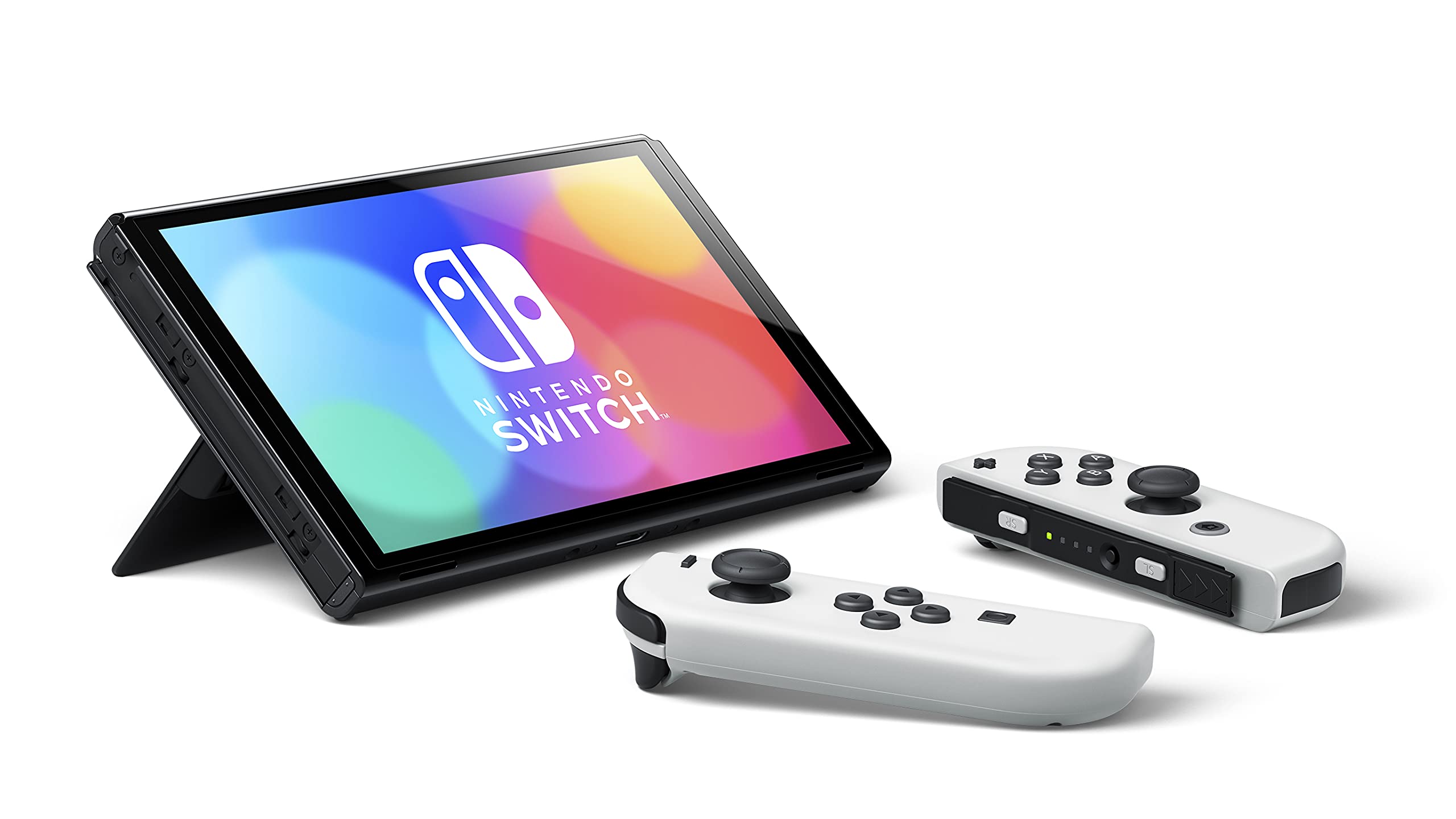I’d put myself in the upper echelons of Nintendo fandom. I’ve had a long history with the company since my first hand-me-down GameBoy Pocket. I’m an Animal Crossing die-hard, my girlfriend beats me at Mario Kart, and I frequently reminisce over Wii Sports taking over the world in 2007. I still enjoy most of Nintendo’s first-party output, and the Nintendo Switch, the hybrid console phenomenon entering its eighth year on the market, is my preferred choice for third-party titles when possible.
I’ve been anticipating a jump in hardware since the dreaded Switch Pro rumour cycle in 2021 and thought this would finally be the year I could lay my Switch to rest. Last year felt like the perfect swansong for the Nintendo Switch: heavy hitters like The Legend of Zelda: Tears of the Kingdom, Pikmin 4, and Super Mario Bros Wonder delivered fantastic experiences, while support for Mario Kart 8 Deluxe concluded with Splatoon 3 soon to follow. It feels like now, more than ever, it’s time for new Nintendo hardware.

However, this doesn’t seem to be the case. Multiple reports have spread that Nintendo has briefed third-party partners to prepare for a Q1 2025 launch. There’s no other way to put it —it’s incredibly disappointing. The Switch may have long legs, but it is also extremely long in the tooth; it’s beyond fangs. Significant third-party support has dried up from most partners, and Nintendo has gone to the well multiple times for almost all of its key franchises.
While it might not be the disaster of the Wii to Wii U console transition, where the former outstayed its welcome, and the latter launched with pathetic third-party support and a lack of first-party killer apps, the successor to the Switch not launching in 2024 is a missed opportunity – a massive one. This year is likely set to be a barren year for the Switch. There’s only one title fully dated – March’s Princess Peach Showtime. Luigi’s Mansion 2 HD and Paper Mario: The Thousand-Year Door HD have loose 2024 dates, while Metroid Prime 4 remains a mystery.
New hardware in the year’s second half would have ensured Nintendo could navigate working with a smaller first-party Switch schedule. Now, it needs to keep the focus on the Switch for at least another 12 months, with an unknown quantity of games in the pipeline. As of writing, there has yet to be an indication that a General Nintendo Direct is on the way, which leaves the question of what will fill the gap between March 2024 and March 2025. While a few emergency ports and remasters would likely help soften the blow, it still doesn’t feel like there’s enough there. It’s slim pickings, even if you throw a Pokemon holiday title into the mix.
While software and hardware still performed well in FY2024, the sales of Nintendo Switch have decreased year-on-year since FY2021. If there are no Tears of the Kingdom-level games in 2024, I expect this to be the lowest-selling year for the Switch since FY2018. Furthermore, I can’t help but think The Super Mario Bros Movie substantially buffed both the Switch’s software and hardware sales. The movie was a global success, and Nintendo deployed a bunch of deals and bundles focussed on the Mario series around the movie’s release and then again before Christmas.

Nintendo doesn’t have that luxury this time around. While the Mario movie will likely still help promote hardware and software, it won’t have anywhere near the impact or reach it did last year. With no new hardware, a lacklustre software line-up and no box office-busting movie in theatres, 2024 looks like it will be the most challenging year Nintendo has faced in the Switch era.
Investors and fans alike have been asking questions about new hardware for years, with Nintendo President Shuntaro Furukawa usually having “nothing to say” about new hardware. Revealing the console so far in advance is something that Furukawa himself had said he didn’t want to do again, but the delay may force his hand. If 2024 truly is the barren wasteland that’s been rumoured, Nintendo needs to give fans a reason to be excited about the brand. It needs to pull the trigger on a reveal sooner rather than later.
For instance, confirmation from Nintendo regarding backwards compatibility would go a long way in delivering a substantial amount of software sales for the first ten months of FY2025. Banking it all on one or two next-gen titles at the end of the fiscal year doesn’t sound like a strategy that would excite investors, with the potential of even further delays pushing the Switch outside of FY2025. Some fans may also be hesitant to continue spending money on a console that’s all but confirmed to be on its way out without reassurance that they can play their Switch games on new hardware.
Without more information, there’s not much point speculating on the reasons for the delay or looking at how Nintendo could have acted differently. The decision to delay the Switch successor won’t have been taken lightly, and it’s likely a considerably larger pain to Nintendo than it is to us fans. Although I must admit, I’m slightly concerned that Nintendo is playing it far too safe in the hopes of avoiding another Wii U situation or far too confident in thinking the Switch momentum will carry on for another year.
Ultimately, as always, time will tell. But one thing is sure. If Nintendo isn’t releasing new hardware until 2025, it better have a few aces up its sleeve; otherwise, it will be a long year for fans, investors, and the company itself.
For now – and not for the first time – I’m turning the part of my brain anticipating “Switch 2” off. I’m sure I won’t be the only one.
